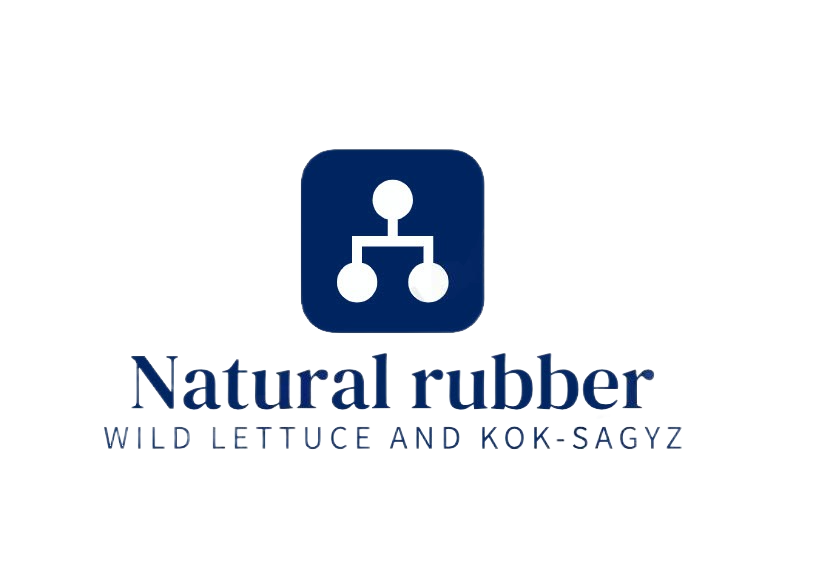Natural Rubber: A Vital Strategic Resource with Emerging Alternatives
Natural rubber is an indispensable raw material in today’s world. It plays a pivotal role in tire manufacturing—making up 15-20% of the compound for passenger vehicle tires and skyrocketing to as much as 85% for heavy-duty truck tires. It’s also invaluable in military applications, medicine, and a range of other sectors.
Interestingly, around 90% of high-quality natural rubber extraction is attributed to the Hevea brasiliensis tree. However, this source is becoming increasingly vulnerable to fungal diseases. Synthetic rubber, although widely produced, can’t quite match the physical, chemical, and mechanical properties of its natural counterpart. This disparity underscores the tireless quest for alternative rubber sources. One of the outstanding virtues of natural rubber over the synthetic variety is its remarkable wear resistance and its ability to endure significant vertical stresses. This makes it the material of choice for aviation tires, which are exclusively made from natural rubber. As industries expand and develop, the global demand for this raw material continues to surge.
The past decade has witnessed a resurgence of interest in non-Hevea sources of natural rubber. Plants like the kok-sagyz and the wild lettuce, Taraxacum kok-saghyz, have garnered attention, particularly in the U.S. and Europe. Several studies, such as those by Schmidt et al. (2010) and Collins-Silva et al. (2012), have delved into characterizing rubber particles and rubber chain elongation in these plants. This rising interest can be attributed not only to the potential fragility of Hevea plantations in Southeast Asia, especially against fungal diseases, but also to the attractive proposition of producing rubber in vast territories with temperate climates. This is especially pertinent in the face of ever-growing demand.
Beyond tires, rubber stands as the foundation for certain medicated patches and is crucial for manufacturing human organ implants. Thus, natural rubber remains an invaluable strategic resource for nations worldwide, emphasizing the ongoing pursuit for diverse and sustainable sources.
Europe’s Untapped Rubber Potential: A Deep Dive into the Resilience of Kok-Sagyz and Wild Lettuce
The global rubber industry, for a long time, has leaned heavily on the Hevea brasiliensis, the primary natural rubber source. However, with vulnerabilities such as fungal diseases plaguing this mainstay, the search for alternative rubber sources is more pressing than ever. Enter the European Union (EU) with its promising sustainable solutions: the wild lettuce, more scientifically recognized as Lactuca, and kok-sagyz.
Recent scientific explorations, notably by researchers like Bushman B.S., Scholte A.A., and Cornish K., have provided intriguing insights. When latex was extracted from the compass lettuce stems, a variety of Lactuca, it was found to contain cis-1,4-polyisoprene rubber in dichloromethane extracts and sesquiterpene lactones in acetone extracts. The rubber content in this latex was around 2.2%, with resinous content ranging from 11.4% to 12.9%. This level of rubber content is not merely incidental; it has the potential to contribute significantly to rubber production.
The morphology of the plant further enhances its feasibility as a rubber source. With stem heights ranging between 60-140 cm and a hue that varies from whitish to yellowish, the wild lettuce is quite distinguishable. Its stem, especially near the base, can be adorned with sparse, rigid spines. Interestingly, the leaves are not just filler – they contain an array of compounds, including glycosides, saponins, sterols, tannins, carbohydrates, and, of course, rubber. Additionally, the perennial nature of these plants is an absolute boon. A single plant can be utilized multiple times, with the root coming into play in the second year, optimizing yield.
The potential benefit of using a combination of rubber-producing plants cannot be overstated. Different plants can offer variations in rubber properties that might be unattainable when relying on a single species.
A study involving two types of lettuce, Lactuca serriola (prickly lettuce) and Lactuca sativa cv. Salinas (crisp lettuce), shed more light on the rubber-producing potential of the Compositae family. Both species contained cis-1,4-polyisoprene rubber in the latex’s dichloromethane-soluble sections and sesquiterpene lactones in the acetone-soluble sections. Notably, the rubber from both these species and their progeny had a molecular weight exceeding 1,000,000 g/mol and polydispersity values of 1.1. Rubber transferase activity was detected across a range of farnesyl diphosphate initiator concentrations.
Considering the genomic and agronomic resources available for these lettuce species, they open the door for in-depth analysis of natural rubber biosynthesis in plants. The EU might just be on the brink of pioneering a sustainable rubber revolution, driven by the unyielding resilience and adaptability of plants like kok-sagyz and wild lettuce.
